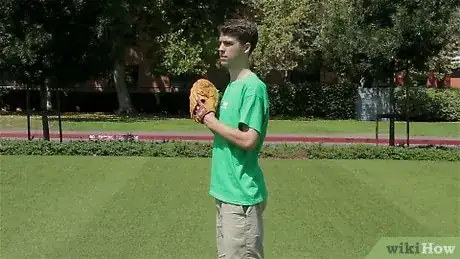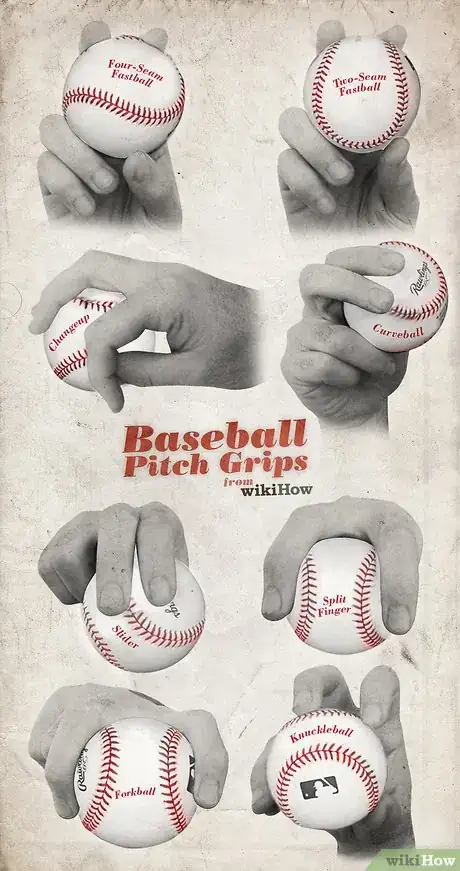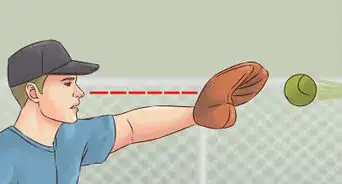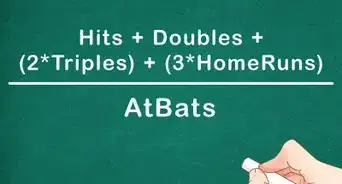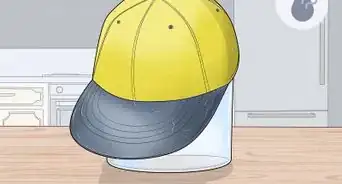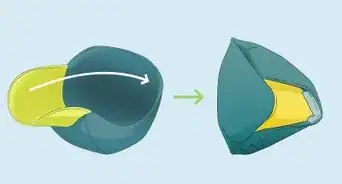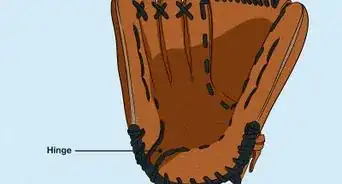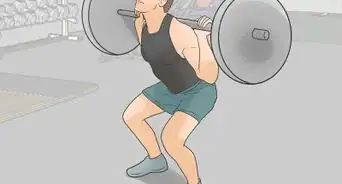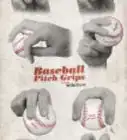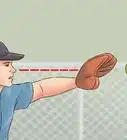This article was co-authored by Isaac Hess. Isaac Hess is a Baseball Coach, Instructor, and the Founder of MADE Baseball Development and Champion Mindset Training Program, a baseball training program based in Los Angeles, California. Isaac has over 14 years of experience coaching baseball and specializes in private lessons and tournaments. He has played baseball for both professional and collegiate leagues including Washington State University and the University of Arizona. Isaac was ranked as one of Baseball America's top 10 prospects for 2007 and 2008. He earned a BS in Regional Development from the University of Arizona in 2007.
There are 12 references cited in this article, which can be found at the bottom of the page.
wikiHow marks an article as reader-approved once it receives enough positive feedback. In this case, 89% of readers who voted found the article helpful, earning it our reader-approved status.
This article has been viewed 237,319 times.
Playing baseball is incredibly fun and rewarding, but in order to perfect your game you must perfect your throw. Take the following steps to get your throwing mechanics down pat, and increase your accuracy, speed, and strength.
Steps
Perfecting Your Stance
-
1Get into throwing position. Before you make any throw, your entire body should be shifted into the “ready position” for throwing. Your feet should be shoulder width apart with knees slightly bent, your body should be relaxed, and your hips and shoulders should be lined up.[1]
- Start with the ball held in your glove near your chest. This places it in a good location for you to make a quick throw.
- Make sure your feet aren’t staggered. You will start your throw with your feet at a level distance, and then take a step away as you throw. You should not take this step before beginning to throw though.
- When you throw the ball, you will keep your feet and shoulders in line similar to in the ready position.[2]
- Stay alert and focused whenever you are preparing to throw. Even if you are waiting around before practice, avoid dawdling while you stand and practice your throwing stance.
-
2Get the right grip.[3] Once you’ve gotten into position, the next step is to hold the ball. Although simply holding the ball may seem easy, it is necessary to use the proper grip. Place your index and middle finger across one of the rows of seems, with your thumb forming a third gripping-point directly underneath. Your ring and pinky fingers should curl slightly behind the ball and aid in supporting it.[4]
- Holding the ball along the seams correctly positively influences the speed and direction of the throw. When held this way, your throw is more likely to be straight rather than a curved lob.
- Keep the ball out on your fingertips and not in the palm of your hand. Palming the ball will cause a slower release time, which worsens your accuracy and speed.
- Ideally, your grip should allow you to contact all four seams at once. This is difficult at first, but practicing holding the ball in this fashion from the get-go will give you improved throwing over time.
- At first you may have to look at the ball to line up the seams with your correct fingers, but as you practice you should be able to feel the correct finger placement without looking, using only touch.
Advertisement -
3Move your joints correctly. One of the most important parts of making a good throw is moving your joints in the correct manner.[5] This includes your wrist, elbow, and shoulder. In good throwing, all three of these should be moved together. If any of these joints is stiff and doesn’t move when you throw, practice actively moving each during every wind-up.
- When you wind-up for your throw, your arm should swing loose in your shoulder socket. To practice your ability to move your shoulder freely, do windmill arm exercises. Rotate your arms in wide forward-facing circles around your shoulder.
- Make sure you keep a bent elbow during each throw. Although you use a windmill-like motion to bring the ball back and around your body, your elbow should bend in the process. A stiff elbow will limit the distance of your throw.
- Think of your wind-up as a cross between making a windmill circle and pulling a bow and arrow. Your elbow should be bent, but will wind-up behind your torso in a circular rotation.
- Your wrist should be incredibly flexible and used heavily in each throw. As the saying goes, “it’s all in the wrist.”[6] Just prior to releasing the ball, your wrist should be bent back so that your palm is facing forward. As you throw the ball, you will flick your wrist downwards in a strong motion. This will give your throw momentum and increase its accuracy.[7]
Throwing the Ball
-
1Get into position. Once you are sure of your stance, grip, and joint movement, put the three together to throw the ball. Your torso should be turned away from your target, and you should be holding the ball in your throwing hand near your chest.[8]
-
2Aim the ball before you throw it. If you want your throw to be accurate, you need to be sure of where you want it to go. If you are throwing to a partner, always aim for their chest. Feel free to use your glove to point at your target, as this will help your body to line up into position.[9]
-
3Wind up your arm. Bring the ball back and around your body for your wind-up. You should bring your elbow back and around, allowing it to open and close as you rotate your arm. As you bring your arm around in front of you, release the ball when it lines up with your target.[10]
-
4Move your body forward with your throw. As you prepare to release the ball, take a step towards your target with your leg opposite your throwing hand. If you are right-handed, you will take a step with your left foot. Simultaneously, rotate your hips towards your target.[11]
-
5Maintain eye contact with your target as you throw. Your throw will follow your eyes, so if you are looking around or not paying attention, you will not hit your target with the ball.
-
6Have a strong follow through with your throw. After you release the ball, your throwing arm should continue downwards and land on your opposite hip. This will give power to your throw and increase your accuracy.[12]
-
7Check your finished throwing stance. Your feet should be a bit wider and staggered because of your throw, your hips will be turned, facing your target, and your throwing arm should be diagonally across your body with your hand on your opposite hip.[13]
Practicing the Motions
-
1Practice flicking your wrist. If you find that you have a difficult time getting that extra flick of the wrist in at the release of every throw, try this for practice. Kneel on the ground with a partner, spaced about 5–10 feet (1.5–3.0 m) apart. You don’t need to use your mitt for this, as you won’t be throwing hard enough to cause an injury.[14]
- Bend your throwing elbow so that it is vertical, or parallel to your torso. You won’t be winding up your arm for this, so stiffen your shoulder and elbow joints to hinder movement.
- Use your non-throwing hand to hold the elbow of your throwing arm. You are doing this to prevent it from moving, so cup the front of your elbow tight enough that you will block your forearm from moving forward.
- Throw the ball by flicking your wrist only. You should start with the correct ball grip and your wrist tilted slightly back, and then toss the ball forward by flicking your wrist downwards sharply. You are using your wrist to provide all the momentum of the throw; don’t use any other part of your body.
- As you practice this, move a few steps further back. This will strengthen the power of your wrist and help you to use this motion even at a distance. You should never exceed 20 feet (6.1 m) from your partner though, so that you don’t accidentally cause injury to yourself or your partner.
-
2Practice your follow through. If you have problems with making strong, fast throws while maintaining accuracy, it may have to do with your follow through. To do this exercise, kneel on one knee (your throwing knee) on the ground about 10 feet (3.0 m) away from your partner. Practice softly throwing the ball, focusing on your form and windup.[15]
- As you release the ball, bring your arm completely across your body so that your throwing hand rests on the other side of your opposite thigh. If you were standing, your arm would rest on your hip.
- You should not focus on speed or strength for the exercise. Concentrate solely on the accuracy of your throw and your follow through.
- Make sure that although you are bringing your arm totally across your body, that you are still releasing the ball when it lines up with the target in front of you. Releasing the ball too early or too late will cause it to go off target.
- As you feel more confident in your follow through, slowly move further back while still kneeling. Eventually, use this same practice while standing.
-
3Practice your aim. With good wrist-movement and follow-through, you are on the road to perfect aiming. To practice your aim, stand with a partner a short distance away (10-15 feet). Use the aforementioned exercises to throw the ball to the other person.
- Before each throw, stick out your gloved hand to point at the chest of the other person. Simultaneously, take a small step with the same foot.
- Practice this without gloves, so that you are focused on aim rather than strength.
- As you throw, keep your eyes on your partner’s chest. You should never release eye contact, until they have caught the ball. Pointing, taking a step, and maintaining eye contact should help to perfect your aim.
- Move further and further back, and begin using your glove if necessary while practicing your aim.
Expert Q&A
-
QuestionHow do I throw a baseball more accurately?
 Isaac HessIsaac Hess is a Baseball Coach, Instructor, and the Founder of MADE Baseball Development and Champion Mindset Training Program, a baseball training program based in Los Angeles, California. Isaac has over 14 years of experience coaching baseball and specializes in private lessons and tournaments. He has played baseball for both professional and collegiate leagues including Washington State University and the University of Arizona. Isaac was ranked as one of Baseball America's top 10 prospects for 2007 and 2008. He earned a BS in Regional Development from the University of Arizona in 2007.
Isaac HessIsaac Hess is a Baseball Coach, Instructor, and the Founder of MADE Baseball Development and Champion Mindset Training Program, a baseball training program based in Los Angeles, California. Isaac has over 14 years of experience coaching baseball and specializes in private lessons and tournaments. He has played baseball for both professional and collegiate leagues including Washington State University and the University of Arizona. Isaac was ranked as one of Baseball America's top 10 prospects for 2007 and 2008. He earned a BS in Regional Development from the University of Arizona in 2007.
Baseball Coach & Instructor Make sure you follow through and continue practicing your aim before you work on increasing your speed.
Make sure you follow through and continue practicing your aim before you work on increasing your speed. -
QuestionWhat does "throwing from the stretch" mean?
 DonaganTop AnswererIt's a pitching term. It means pitching without a windup in order to keep baserunners close to their bases before the pitch is delivered.
DonaganTop AnswererIt's a pitching term. It means pitching without a windup in order to keep baserunners close to their bases before the pitch is delivered. -
QuestionWhat's the ideal arm position for a throw?
 DonaganTop AnswererIn throwing a baseball, use the form most comfortable and effective for you. Some people throw with their arm nearly vertical. Some throw with their arm nearly horizontal ("sidearm"). Most throw with the arm somewhere in between.
DonaganTop AnswererIn throwing a baseball, use the form most comfortable and effective for you. Some people throw with their arm nearly vertical. Some throw with their arm nearly horizontal ("sidearm"). Most throw with the arm somewhere in between.
Warnings
- Don't throw towards people who are unaware you are throwing the ball.⧼thumbs_response⧽
- Don't throw towards windows or other glass or breakable materials.⧼thumbs_response⧽
- Don't overthrow as this can lead to severe injuries such as torn rotator cuff, torn labrum,[16] or tendinitis in the elbow.[17]⧼thumbs_response⧽
References
- ↑ https://www.youtube.com/watch?v=W8Wosz4XaRU
- ↑ http://theseason.gc.com/baseball-4-steps-throwing-technique
- ↑ https://www.youtube.com/watch?v=MHG3tAzjRk8
- ↑ http://www.thecompletepitcher.com/pitching_grips.htm
- ↑ https://www.popularmechanics.com/adventure/sports/a6063/how-the-105-mph-fastball-tests-the-limits-of-the-human-body/
- ↑ http://www.qcbaseball.com/drills/throwing-wrist.aspx
- ↑ http://www.qcbaseball.com/skills/pc_throwing1.aspx
- ↑ https://www.youtube.com/watch?v=W8Wosz4XaRU
- ↑ https://www.ducksters.com/sports/baseball/throwing.php
- ↑ http://www.qcbaseball.com/skills/throwing-a-baseball.aspx
- ↑ http://www.qcbaseball.com/skills/throwing-a-baseball.aspx
- ↑ Isaac Hess. Baseball Coach & Instructor. Expert Interview. 20 March 2020.
- ↑ https://www.youtube.com/watch?v=W8Wosz4XaRU
- ↑ http://www.qcbaseball.com/drills/throwing-wrist.aspx
- ↑ http://theseason.gc.com/baseball-4-steps-throwing-technique
- ↑ https://orthoinfo.aaos.org/en/diseases--conditions/shoulder-injuries-in-the-throwing-athlete/
- ↑ https://orthoinfo.aaos.org/en/diseases--conditions/elbow-injuries-in-the-throwing-athlete/
About This Article
To throw a baseball, stand with your feet shoulder-width apart with your knees slightly bent. Hold the ball in your glove near your chest. Place your index and middle finger across one of the rows of seams, and grip the ball directly under your first 2 fingers. Your ring and pinky fingers should curl slightly behind the ball to support it. Bring your arm up behind your head, then swing your arm forward, releasing the ball when it lines up with your target. Keep reading to learn different throwing grips, like a four-seam fastball or a curveball.
